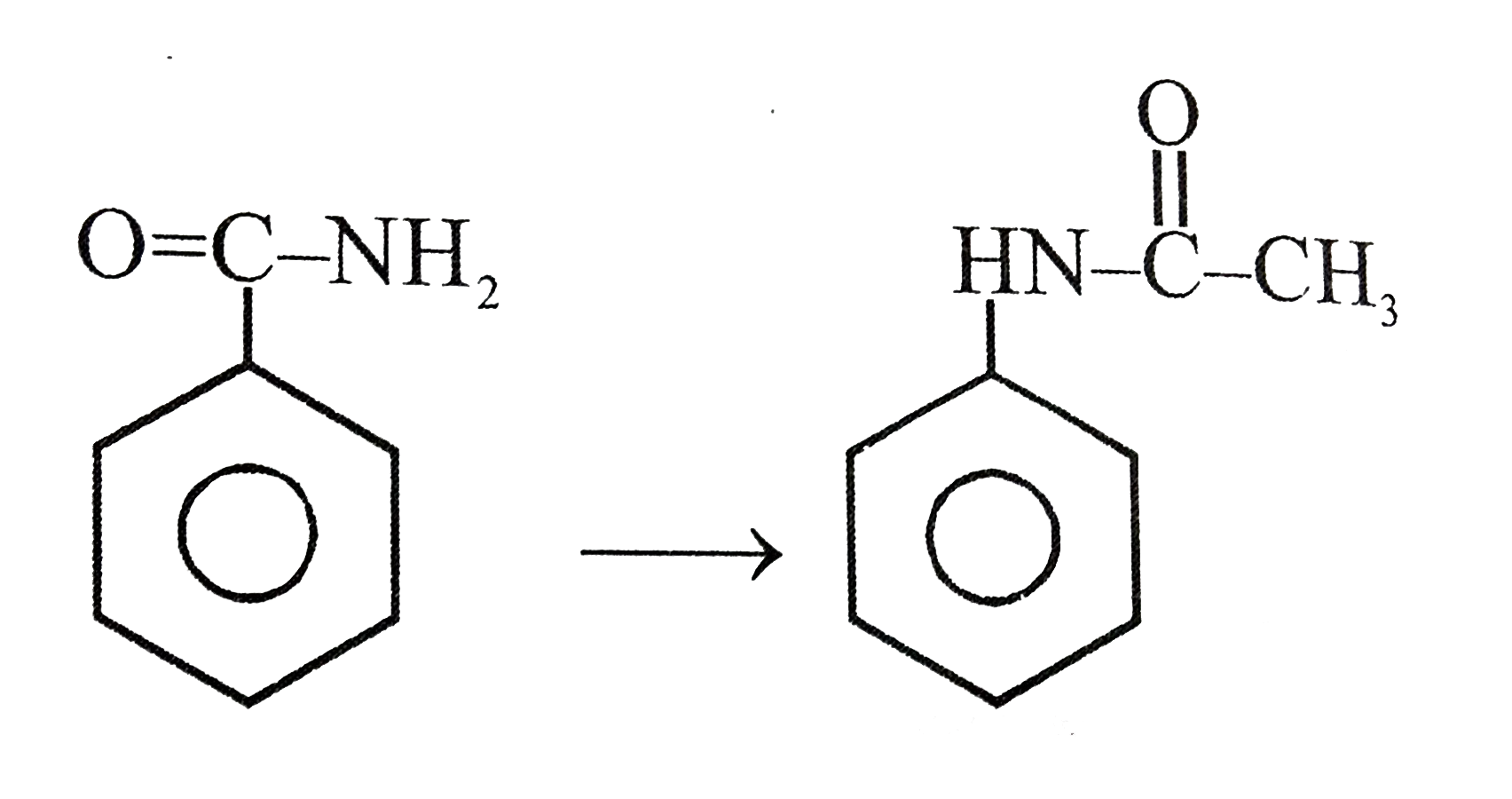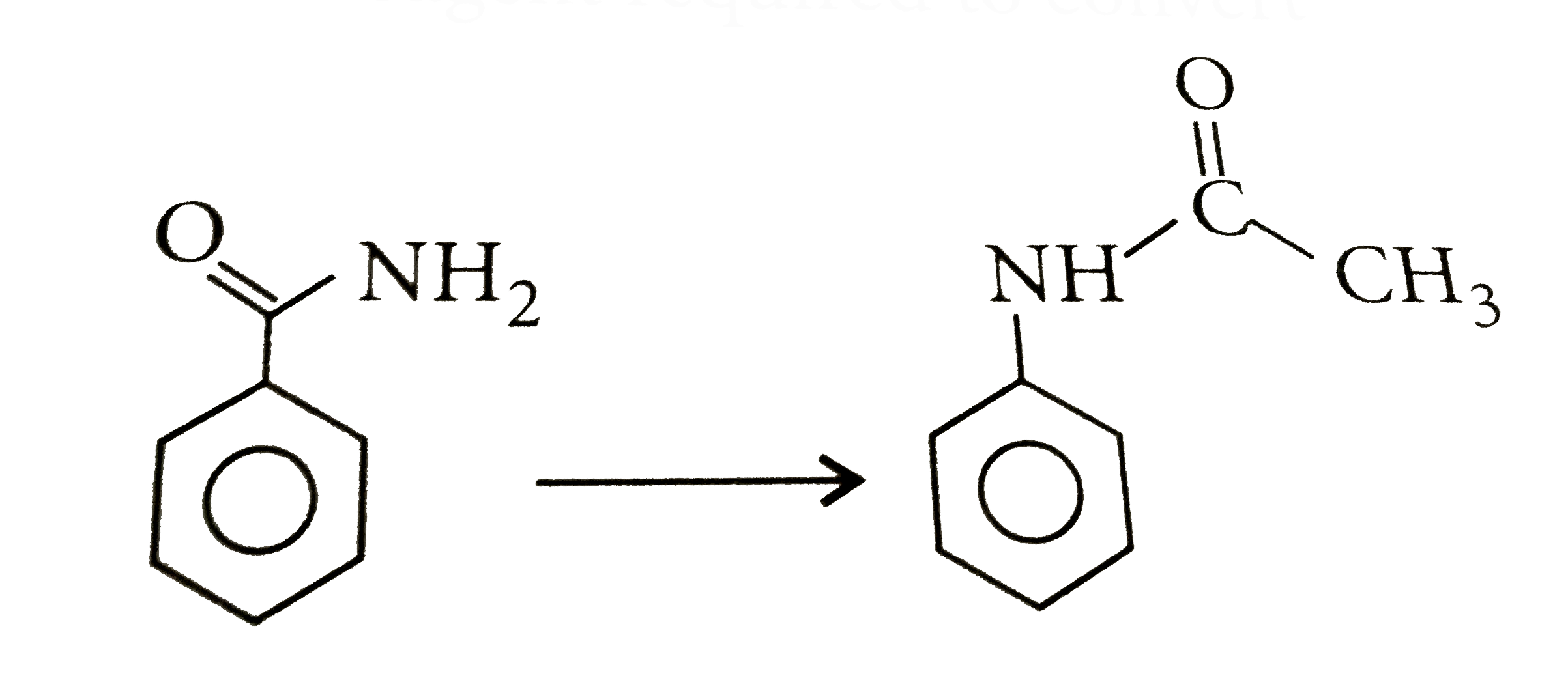The best reagent for converting 2-phenylpropanamide into 2-phenylpropanamine is
excess H2
Br2 in aqueous NaOH
iodine in the presence of red phosphorus
LiAlH4 in ehter.
To convert 2-phenylpropanamide into 2-phenylpropanamine, we need to identify the best reagent for this transformation. Here’s a step-by-step solution:
Step 1: Identify the Structure of 2-Phenylpropanamide
2-Phenylpropanamide has a phenyl group attached to a propane chain with an amide functional group. The structure can be represented as follows:
O∣∣C6H5−C−CH(CH3)2
Step 2: Analyze the Options
We need to evaluate the given options to determine which reagent can effectively convert the amide to the corresponding amine.
1. Excess H2: While hydrogen gas can reduce some compounds, it typically requires a catalyst. In this case, it is not sufficient on its own to convert an amide to an amine, making this option incorrect.
2. Br2 in aqueous NaOH: This reagent is associated with the Hofmann bromamide degradation reaction, which results in the loss of one carbon atom from the amide. This reaction is not suitable for our purpose since we want to retain the carbon chain length. Thus, this option is also incorrect.
3. Lithium Aluminium Hydride (LiAlH4) in Ether: LiAlH4 is a strong reducing agent that can effectively reduce amides to amines without changing the carbon chain length. When 2-phenylpropanamide reacts with LiAlH4, it will produce 2-phenylpropanamine.
Step 3: Conclusion
The best reagent for converting 2-phenylpropanamide into 2-phenylpropanamine is Lithium Aluminium Hydride (LiAlH4) in Ether.
Final Answer
Lithium Aluminium Hydride (LiAlH4) in Ether
---
2-Phenylpropanamide has a phenyl group attached to a propane chain with an amide functional group. The structure can be represented as follows:
We need to evaluate the given options to determine which reagent can effectively convert the amide to the corresponding amine.
The best reagent for converting 2-phenylpropanamide into 2-phenylpropanamine is Lithium Aluminium Hydride (LiAlH4) in Ether.
Lithium Aluminium Hydride (LiAlH4) in Ether
Topper's Solved these Questions
- AMINES BOOK - NCERT FINGERTPS ENGLISHCHAPTER - AMINES EXERCISE - NCERT EXEMPLER PROBLEMS
3 Videos
- AMINES BOOK - NCERT FINGERTPS ENGLISHCHAPTER - AMINES EXERCISE - ASSERTION & REASON CORNER
14 Videos
- AMINES BOOK - NCERT FINGERTPS ENGLISHCHAPTER - AMINES EXERCISE - HOTS
6 Videos
- ALDEHYDES, KETONES AND CARBOXYLIC ACIDSBOOK - NCERT FINGERTPS ENGLISHCHAPTER - ALDEHYDES, KETONES AND CARBOXYLIC ACIDSEXERCISE - Assertion And Reason
15 Videos
- BIOMOLECULESBOOK - NCERT FINGERTPS ENGLISHCHAPTER - BIOMOLECULESEXERCISE - Assertion And Reason
15 Videos
Similar Questions
Knowledge Check
The best reagent to convert pent-3-en-2-ol into pent-3-en-2-one is
Aacidic permanganateBacidic dichromateCchromic anhydride in glacial acetic acidDpyridinium chlorochromate.
The reagents used to convert

View SolutionThe reagent needed for converting
 is :
is :
View SolutionThe reagents needed to convert :

View SolutionThe reagent required to convert

View SolutionThe best reagent for converting an alcohol into the corrosponding chloride is
View SolutionWhich of the following is the best reagent to convert 1-Methylcyclohexene into 2-methylcyclohexanol ?
View SolutionWhich of the following is a true nut?
View Solution
